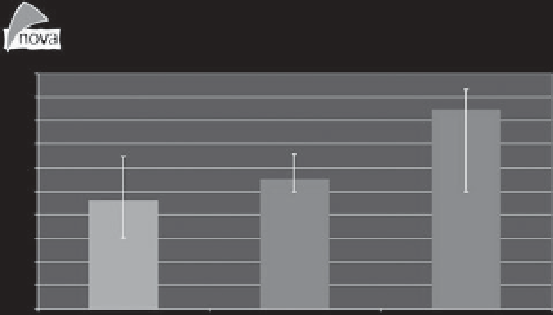Agriculture Reference
In-Depth Information
A closer estimate of the future market
chances of different NF techniques is provided
below.
constitute an exception. Their market share is
still less than 1%, but will increase.
The data for cotton are even sparser. Only
a few hundred tonnes could be verified,
although our previous study (2004) had stated
about 45,000 t of cotton and about 79,000 t
of respective composites for 2003.
This discrepancy was due to the fact that
the survey was conducted primarily among
passenger car subsuppliers, while thermoset
cotton composites today are used almost exclu-
sively in lorry driver cabs.
11.6
Excursus: Wood and Cotton
In the framework of the study, there has been
an attempt to survey also the amounts of wood
fibres and cotton that are used in German
automotive production. Unfortunately, how-
ever, this was not possible in the framework of
the investigation.
As important companies from the wood
fibre and wood flour processing sector did not
take part in the survey, merely about 16,000 t
of wood fibres could be verified. In the frame-
work of our market study of 2004, we had
assumed about 25,000 t of wood fibres and
about 36,000 t of wood fibre composites for
2003. Because growth was generally expected
for this sector, we estimated the amount for
2005 at about 27,000 t of wood fibres and
about 40,000 t of respective wood fibre
composites.
The wood fibre composites used in the
automotive industry have a large fibre con-
tent and an almost exclusively thermoset
matrix. Wood plastic composite (WPC) gran-
ulates made from a thermoplast, wood flour
and fibres, respectively, as well as additives,
11.7 Natural Fibre Shares for
Different Production Techniques
Figure 11.4 shows the NF shares for differ-
ent production techniques. This year, as
mentioned in the introduction, these data
were surveyed for the first time. As expected,
the fibre shares for thermoset wood com-
posites were the highest with just under
85%. When natural fibres (not including
wood and cotton) are processed on a ther-
moset basis, the fibre share amounts to
approximately 55%. The large share of NF
in thermoplastic composites came as a sur-
prise. While in the past, in accordance with
the producers interviewed, we had assumed
a fibre share of 30-40%, the current survey
100%
90%
80%
70%
60%
50%
40%
30%
20%
10%
0%
46.2%
55.2%
84.7%
Natural Fibres*
Thermoplast
Natural Fibres*
Thermoset
Wood Fibres
Thermoet
* without wood and cotton
Fig. 11.4.
Natural fibre reinforced composites (not including wood or cotton) in different processing
technologies of composites in the German automotive industry in 2005 (nova-Institut, November 2006)

